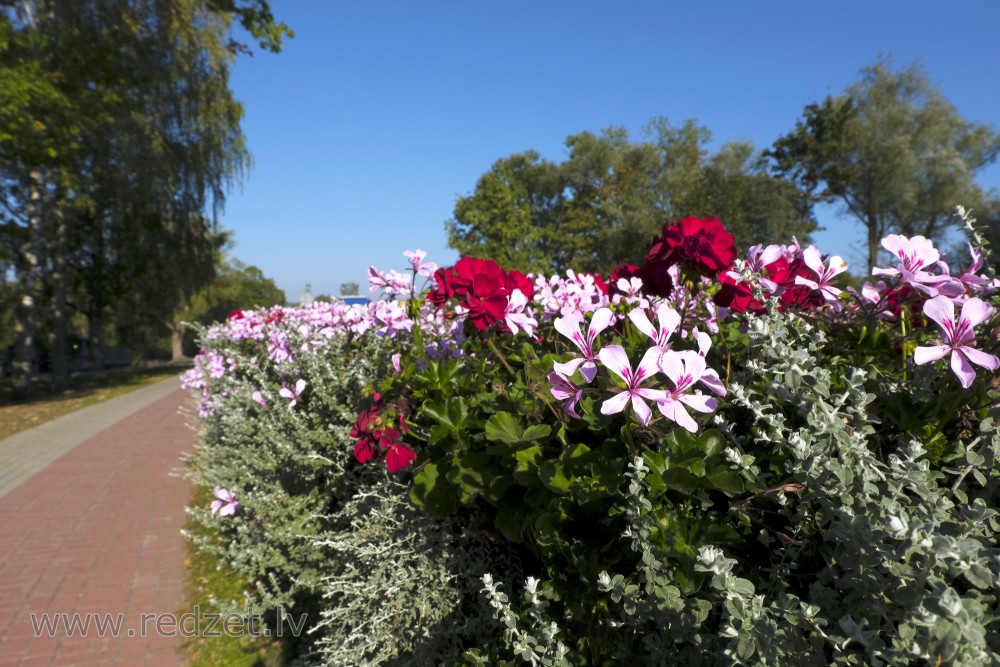(Helichrysum petiolare) Licorice-plant
Helichrysum petiolare, licorice-plant, (or liquorice plant), is a species of flowering plant in the family Asteraceae, native to South Africa and naturalized in parts of Portugal and the United States. Growing to about 45 cm (18 in) high and 150 cm (59 in) broad, it is a trailing evergreen subshrubwith furry grey-green leaves and small white flowers. Other common names include silver-bush everlastingflower, trailing dusty miller and kooigoed. The foliage has a faint licorice aroma
Cultivation
It is cultivated for its foliage effect and as groundcover.This plant prefers sun to part-shade with well-drained soil, being susceptible to root rot and is hardy to zones 9-11, in mild or coastal areas where temperatures do not fall below freezing for extended periods. It requires a sheltered position in full sun.
Uses
Its traditional common name of kooigoed translates as "bedding stuff" and it is still used to provide a soft and aromatic mattress. It is listed as a weed in the state of California.
The essential oil has been investigated for its anti-microbial, anti-oxidant, and anti-inflammatory properties. In South Africa it forms a component of traditional African medicine. The leaves and twigs are boiled and prepared as a sort of tea to soothe coughs and fever. The leaves are also applied to wounds to prevent infection, and are ceremonially burnt to produce a traditional incense.
Medicinal uses
In its ritual use, imphepho is believed to invoke and placate the ancestors and to drive away malicious spirits; since these are regarded as common causes of illness in African traditional medicine, it is not surprising that imphepho is a very important medicinal plant in this traditional medical field. Apart from its traditional importance, imphepho has been widely researched in recent years. A great deal of scientific and anecdotal evidence seems to support the claims of traditional healers. Imphepho is traditionally used as a wound dressing. The plant has proven anti microbial properties and appears to work effectively as pain relief and as an anti-inflammatory, probably due to various volatile oils and flavanoids. Ash from burnt imphepho and fresh or dried areal parts of the plant are common ingredients in wound dressings; burning the plant causes chemical changes to the plant which affect its healing properties. The oils are said to be of great value in healing scars and acne, imphepho is believed to stimulate cellular regeneration. Imphepho is boiled either in water or milk to make a tea, it is used internally to treat coughs, colds, fever, infection, menstrual pain, headaches, insomnia, hypertension and even allergies and diabetes. For pain relief and to treat coughs, colds, bronchitis and other chest infections the plant is burnt and the smoke inhaled. No evidence is available as to how effective imphepho is as a treatment for tuberculosis but the plant's common use in the area and the prevalence of the illness suggest that it may be ineffective.
The papery flowers of various species come in a range of colours with bright to dull yellow, white, pink and orange being most common. They are popular in flower arrangements and have been used in potpourri.
en.wikipedia.org
https://en.wikipedia.org/wiki/Helichrysum_petiolare
Continue reading